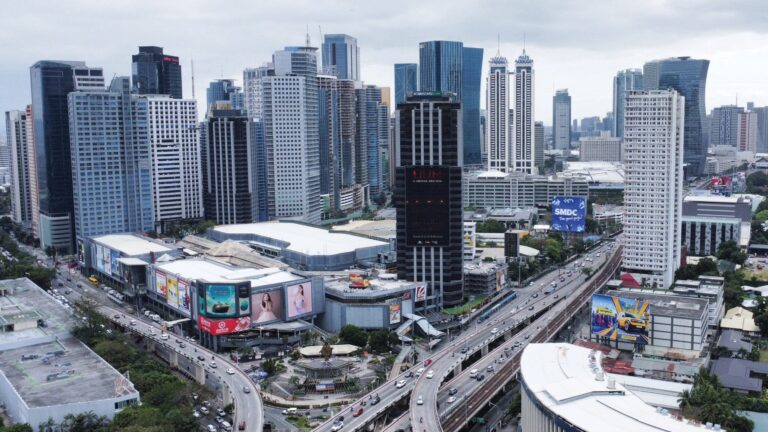As it marks a milestone chronicling our nations journey for 125 years, the Manila Bulletin takes a look back at how the legislature has paved the way to a more resilient future for FilipinosThe Philippines took a major step forward into a more resilient future for its citizens with the passage of key pieces of …
As it marks a milestone chronicling our nations journey for 125 years, the Manila Bulletin takes a look back at how the legislature has paved the way to a more resilient future for Filipinos
The Philippines took a major step forward into a more resilient future for its citizens with the passage of key pieces of legislation aimed at improving all aspects of the Filipino life.
From strengthening the public health care system to enhancing response to mental health needs and ushering in free tertiary education, these landmark laws enacted over the last few years signal the country’s renewed focus toward a better life for all.
Universal Health Care
Considered a crucial component in achieving health equity, the Universal Health Care (UHC) law was a game-changer in the Philippine health system as it sought to provide every Filipino access to health care coverage and services.
Signed into law in 2019 by former president Rodrigo Duterte, Republic Act (RA) No. 11223 mandated the automatic enrollment of all Filipinos in the National Health Insurance Program (NHIP), which is managed by the Philippine Health Insurance Corp. (PhilHealth).
Essentially, this automatic coverage ensures every citizen, including overseas Filipino workers (OFWs), has access to a comprehensive set of health care services. The law specifically cites promotive, preventive, curative, rehabilitative, and palliative care, which would be accessible without causing financial hardship to the patient.
From strengthening the public health care system to enhancing response to mental health needs and ushering in free tertiary education, these landmark laws enacted over the last few years signal the country’s renewed focus toward a better life for all.
The law is expected to take 10 years for its full implementation. President Marcos, for his part, formed a coordinating council in 2023 to oversee the implementation.
The World Health Organization (WHO) itself, in 2019, acknowledged that while there would be work to be done in its implementation, the law marks a “new dawn” in health care as it guarantees that Filipinos have access to essential health services with fewer financial barriers than before.
Mental Health Act
A year before the passage of the UHC law, the Philippines witnessed the historic enactment of the Mental Health Act, which sought to provide greater access to affordable mental health services for Filipinos in need.
RA No. 11036, enacted in 2018, underscored the government’s commitment to promoting the wellbeing and welfare of people with mental health needs by integrating mental healthcare services into the country’s healthcare system.
Specifically, the law aimed to provide psychosocial, psychiatric, and neurological services at the city, municipal, and barangay levels.
While the law has yet to achieve the majority of its objectives, the government has initiated efforts to strengthen its implementation. Case in point, President Marcos recently signed the Basic Education Mental Health and Well-Being Promotion Act, which further expands on a provision embodied in the Mental Health Act.
By prioritizing mental health as an essential component of the country’s healthcare system, the law guarantees that addressing mental health needs is fundamental to human rights.
‘Bayanihan’ amid Covid-19 pandemic
In early 2020, as the world grappled with the unprecedented crisis caused by the Covid-19 pandemic, two landmark laws were successively enacted to equip the Philippine government with the necessary powers to protect the health and welfare of Filipinos.
Enacted on March 25, 2020, RA No. 11469, or the Bayanihan to Heal as One Act, gave then-president Duterte special powers for three months, to adopt emergency measures for the country’s response against Covid-19.
Under this law, measures implemented to control and mitigate the outbreak were based on the WHO guidelines. This includes the mandatory isolation and treatment of Covid-19 patients, contact tracing, and immediate testing of persons with symptoms, among others.
After the powers to exercise these measures expired on June 5 of the same year, Congress later crafted a sequel measure—this time, the focus is more on economic recovery. Aptly called the Bayanihan to Recover as One Act, RA No. 11494 was signed Sept. 11, 2020 to extend the powers granted to the president.
The law expanded on emergency packages to revive the country’s struggling economy. It also set aside funding to heighten contact tracing efforts and to ramp up research on the disease.
Both of these laws were crafted to safeguard the country against the devastating effects of the pandemic.
Free college tuition law
As one of the most celebrated pieces of legislation in recent history, the free college tuition law transformed the country’s outlook on education as it strengthened the right of every Filipino to study at the tertiary level.
Enacted in 2017, RA No. 10931 or the Universal Access to Quality Tertiary Education Act, opened the hallowed halls of state universities and colleges (SUCs), local universities and colleges (LUCs), and government-run technical-vocational institutions (TVIs) to free education.
Specifically, the law covered the tuition fees for all required classes of college students, as well as other school fees including payments for admissions, libraries, computers and laboratories, entrance, and registration, among others.
As a result of the free college tuition law, the Commission on Higher Education (CHEd) reported that it led to a 14 percent increase in enrollment in higher education institutions when the law officially took effect from the 2018-2019 school year.
Figures from 2023 show more than two million students benefit from free college education. This, according to CHEd, signifies that students are now more likely to prefer public institutions for tertiary education—which reflects greater access.






